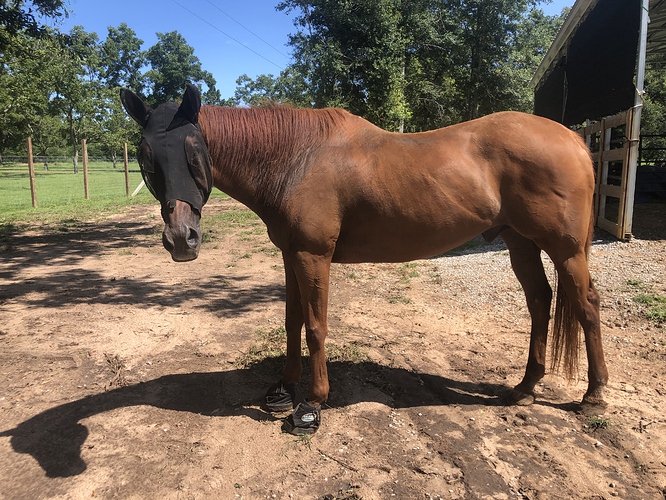Spinning off my own thread
Normie Pooh has foundered per his x rays. Sinking plus mild rotation. Per his x rays he also has scary thin soles and had too much toe. Toes now corrected per x ray.
Vet thinks reintroducing horse to grass is ok. I have typical Deep South grass. Bermuda/bahaia/other warm season volunteer species. No drought or temp stress. Poisonous wild cherry trees that may or may not be related to recent laminitic attack are dead and gone.
He had spring PPID test, negative. He has not had fasting IR test. He is not fat. He is 21. Would you try reintroducing grazing?
Today in dry lot looking like he’s not fat in the least


 I’ve given him small amounts of the PP without soaking with no adverse symptoms. It’s a good crop, few fine stems basically all leaf. I read on the safergrass site that stemmier hay maybe associated with higher nsc.
I’ve given him small amounts of the PP without soaking with no adverse symptoms. It’s a good crop, few fine stems basically all leaf. I read on the safergrass site that stemmier hay maybe associated with higher nsc.